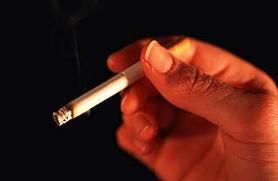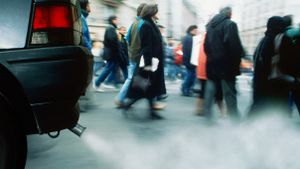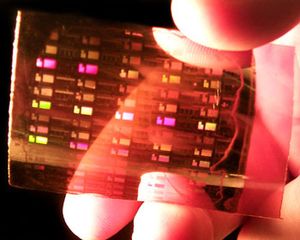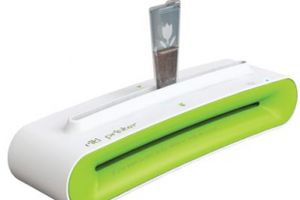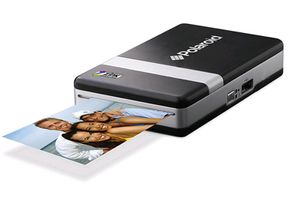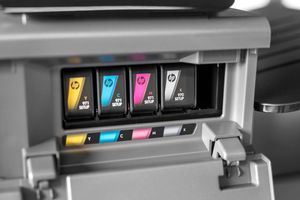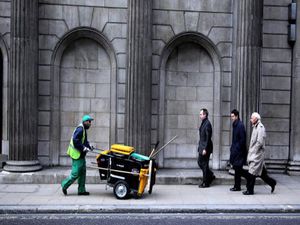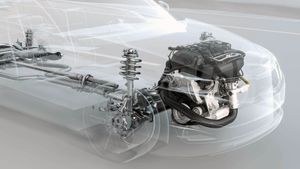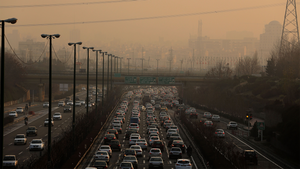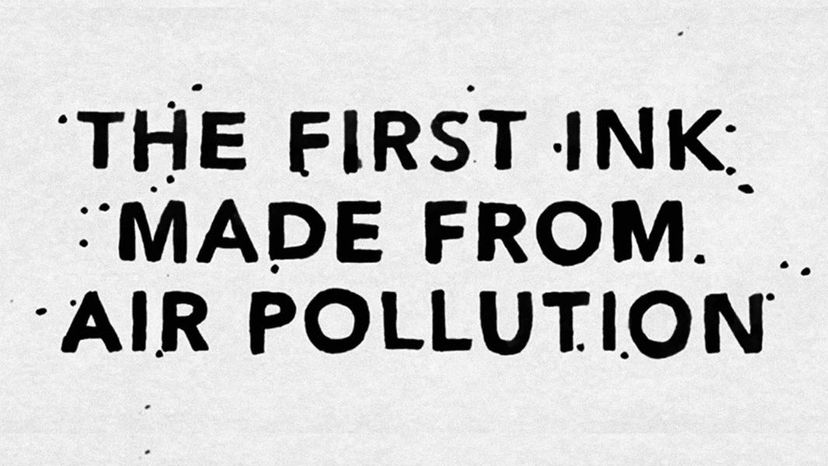
Ever looked at the dirty haze and lung-clogging smog caused by air pollution and thought, "Hey, this could be art"? Sounds ridiculous, right? But with AIR-INK, the ridiculous is becoming a reality, in a product that can turn air pollution into ink.
Graviky Labs is transforming the microscopic particulate matter (known as PM2.5) in machinery exhaust resulting from burning fossil fuels — what we might call soot — into black ink. Whether from cars and trucks or generators and factories, what would have been inhaled by millions or contaminated water and soil, can now be used for drawing and printing. As the Graviky Labs website states, "Our vision is to arrest the urban PM air pollution in a way that it doesn't reach our lungs or waste streams." The goal is "to confine and bind that captured pollution into high grade inks that everyone can use and express themselves with through art or writing."
Advertisement
Graviky Labs grew out of the work that company cofounder and AIR-INK inventor Anirudh Sharma did as a graduate student with MIT Media Labs in Cambridge, Massachusetts. During his studies on a trip home to India in 2012, he took a photo of a white wall covered with a triangle of soot caused by diesel generator exhaust. He saw potential in the pollution.

Carbon black, a byproduct of the incomplete burning of petroleum products, is normally used to produce ink, as well as be a component in rubber, paints and plastics. Rather than burn new fossil fuels for ink production, Sharma and his colleagues wanted to create ink from vehicle and machinery exhaust already being produced, thereby also reducing particulate matter in the air from these sources.
A 2013 experiment with candle soot and an improvised printer cartridge led to a lab setup in India in 2015, where pollution restrictions are not as strict as the U.S., allowing for easier particulate capture and more effective testing.
The trial and error of attaching strange equipment to cars in Bangalore for capturing PM2.5 produced KAALINK, a small device that can be retrofitted to exhaust pipes. This electrical and mechanical device can capture 95 percent of PM2.5 in the exhaust without any adverse effect on engine performance.
Once the particulate matter is filtered, ground to a standard size, and liquified in a Graviky Labs proprietary process, the result is a densely colored, free-flowing black ink. One 30 milliliter pen is the equivalent of 45 minutes of diesel pollution.
A number of Indian companies have contacted Graviky Labs to dispose of particulate matter that otherwise could end up in a river or landfill. A 2017 Kickstarter campaign raised more than 40,000 Singapore dollars (equal to more than $29,000 in U.S. money) from more than 680 contributors. In addition, Singapore-based Tiger Beer partnered with Graviky Labs for an art campaign, making AIR-INK available to artists in cities such as Hong Kong, Berlin and London to create murals and other public artworks.
And AIR-INK is now featured at the Cooper Hewitt, Smithsonian Design Museum in New York in the exhibit "Nature — Cooper Hewitt Design Triennial", which runs through January 2020. And yes, it is available for purchase.
Since 2016, Graviky Labs has been able to clean 1.6 trillion liters (98 trillion cubic inches) of air, producing more than 1,200 liters (73,000 cubic inches) of AIR-INK. But with the KAALINK device capable of customization for larger applications including factory smokestacks and capturing particulates directly from the air, those numbers should only increase.
Sharma and his colleagues could then scale up to tackle industrial applications, including inkjet printers, textiles and publishing. As inventors and entrepreneurs, the Graviky Labs team would be able to breathe a little easier. And so would we.
This story is part of Covering Climate Now, a global collaboration of more than 250 news outlets to strengthen coverage of the climate story.
Advertisement
